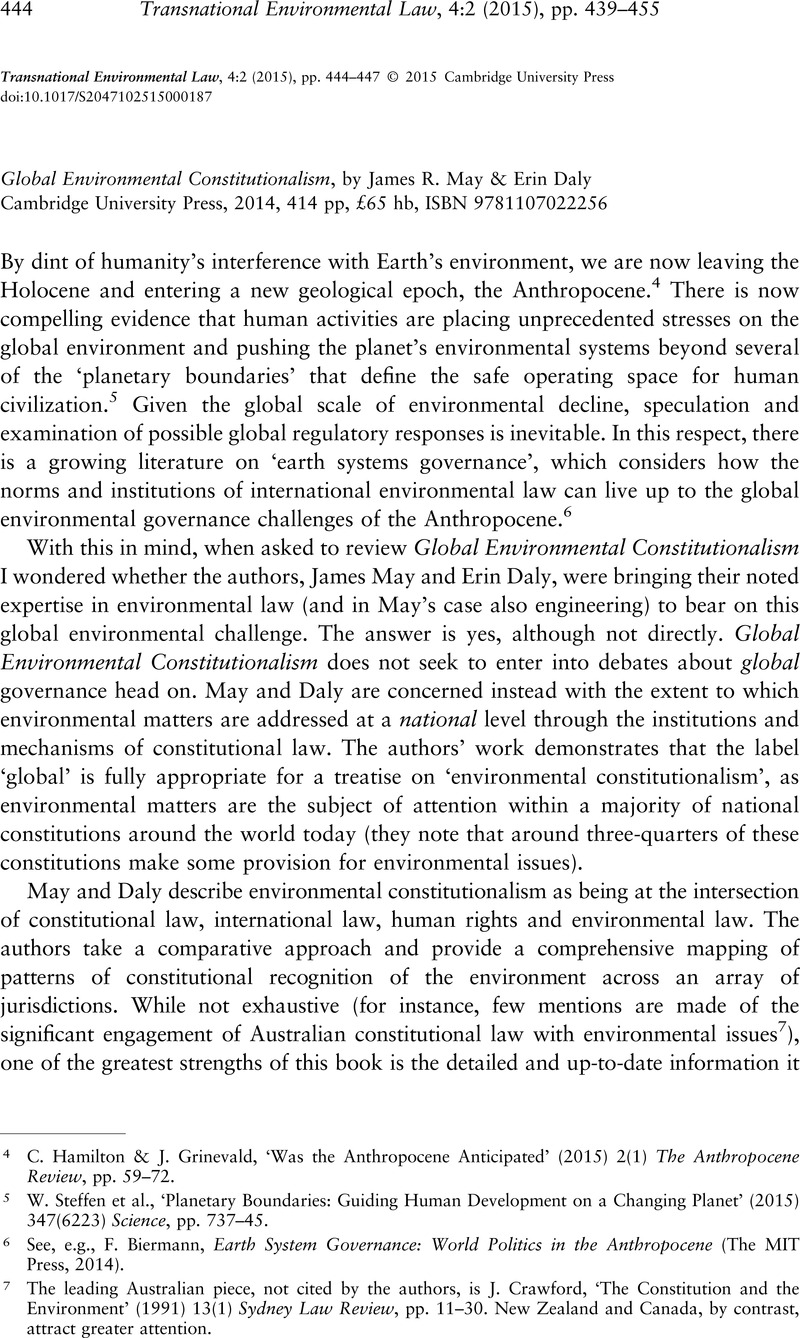No CrossRef data available.
Article contents
Global Environmental Constitutionalism, by James R. May & Erin Daly Cambridge University Press, 2014, 414 pp, £65 hb, ISBN 9781107022256
Review products
Published online by Cambridge University Press: 02 October 2015
Abstract

- Type
- Book Reviews
- Information
- Copyright
- © Cambridge University Press 2015
References
4 Hamilton, C. & Grinevald, J., ‘Was the Anthropocene Anticipated’ (2015) 2(1) The Anthropocene Review, pp. 59–72CrossRefGoogle Scholar.
5 Steffen, W. et al., ‘Planetary Boundaries: Guiding Human Development on a Changing Planet’ (2015) 347(6223) Science, pp. 737–745CrossRefGoogle ScholarPubMed.
6 See, e.g., Biermann, F., Earth System Governance: World Politics in the Anthropocene (The MIT Press, 2014)CrossRefGoogle Scholar.
7 The leading Australian piece, not cited by the authors, is Crawford, J., ‘The Constitution and the Environment’ (1991) 13(1) Sydney Law Review, pp. 11–30Google Scholar. New Zealand and Canada, by contrast, attract greater attention.
8 A recent compendium of comparative constitutional materials is Ross, S., Irving, H. & Klug, H., Comparative Constitutional Law: A Contextual Approach (LexisNexis, 2014)Google Scholar.
9 E.g., Constitution of the Philippines, Art. II, s. 16: ‘The State shall protect and advance the right of the people to a balanced and healthful ecology in accord with the rhythm and harmony of nature’.


